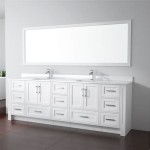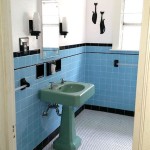How to Paint Bathroom Shower Tiles: A Comprehensive Guide
Painting bathroom shower tiles offers a cost-effective alternative to a full-scale renovation. It allows for updating the aesthetic of a bathroom without the significant expense and disruption of removing and replacing the existing tiles. However, painting shower tiles requires careful preparation, the selection of appropriate materials, and meticulous application techniques to ensure a durable and visually appealing finish. This article provides a detailed guide on how to successfully paint bathroom shower tiles.
Key Considerations Before Painting
Before embarking on the painting process, several factors must be considered. The type of tile, the condition of the existing surface, and the intended use of the shower all influence the success of the project. Proper assessment and planning are crucial for achieving long-lasting results.
Firstly, identify the tile material. Ceramic and porcelain tiles are the most common in shower installations and are generally suited for painting. Natural stone tiles, while less common, may present unique challenges due to their porous nature. It is critical to research the specific characteristics of the tile before proceeding. Glossy tiles require more extensive preparation than matte tiles to ensure proper paint adhesion.
Secondly, evaluate the condition of the tiles and grout. Look for cracks, chips, loose tiles, or deteriorating grout. Addressing these issues before painting is essential. Cracked or loose tiles must be repaired or replaced. Crumbling grout should be removed and re-grouted. Ignoring these problems will compromise the integrity of the painted surface and lead to premature failure.
Thirdly, consider the environmental conditions. Shower environments are subjected to high humidity and frequent exposure to water. This necessitates the use of paints specifically formulated for wet environments that are resistant to mildew and mold growth. General-purpose paints are unlikely to withstand these conditions and will likely peel or blister over time.
Finally, acknowledge the limitations of painted shower tiles. While the application process can significantly improve the appearance of a bathroom, it is not a permanent solution. Over time, the painted surface may show signs of wear and tear, especially in areas with high water exposure or frequent cleaning. Setting realistic expectations is essential.
Materials and Tools Required
Selecting the right materials and tools is critical for a successful painting project. The following list outlines the essential items needed for painting bathroom shower tiles:
Cleaning Supplies: A strong cleaner is necessary to remove soap scum, mildew, and other residue from the tiles. Options include bleach-based cleaners (used with proper ventilation and protection) or specialized tile and grout cleaners. A stiff-bristled brush or sponge is also required for thorough cleaning.
Repair Materials: Depending on the condition of the tiles and grout, these may include tile adhesive or epoxy, replacement tiles, grout removal tools, and new grout.
Sandpaper: Medium-grit (120-180) and fine-grit (220-320) sandpaper are needed for surface preparation. Sandpaper helps to create a slightly roughened surface that promotes better paint adhesion.
Primer: A high-quality epoxy or bonding primer specifically designed for tile is essential. The primer acts as a bridge between the tile surface and the paint, ensuring proper adhesion and preventing peeling.
Paint: A two-part epoxy paint or a specialized tile paint is recommended. These paints are designed to withstand the harsh conditions of a shower environment and offer superior durability and water resistance. Avoid using latex or acrylic paints, as they are not typically formulated for such conditions.
Sealant: A clear, waterproof sealant or epoxy grout is necessary to seal the painted grout lines. This helps to prevent water penetration and maintain the integrity of the painted surface.
Application Tools: These include paint rollers (foam or microfiber with short nap), paint brushes (angled for corners and detail work), paint trays, painters tape, drop cloths, and stirring sticks.
Safety Gear: Eye protection (goggles), gloves, and a respirator or mask are crucial for protecting yourself from harsh chemicals and paint fumes.
Step-by-Step Painting Process
The following steps outline the process of painting bathroom shower tiles, from preparation to finishing touches. Adhering to these steps ensures the best possible results.
Step 1: Cleaning and Repair: Thoroughly clean the tiles and grout with a powerful cleaning solution. Scrub vigorously to remove all traces of dirt, soap scum, and mildew. Rinse thoroughly with clean water and allow the surface to dry completely. Inspect the tiles and grout for any damage. Repair or replace any cracked or loose tiles. Remove any crumbling or damaged grout and re-grout the affected areas. Allow the grout to cure completely according to the manufacturer's instructions.
Step 2: Sanding: Once the surface is clean, dry, and repaired, lightly sand the tiles with medium-grit sandpaper. This roughens the surface and provides a better grip for the primer. Pay particular attention to glossy tiles, as they require more aggressive sanding. After sanding, wipe down the tiles with a damp cloth to remove any sanding dust. Allow the surface to dry completely.
Step 3: Taping and Protection: Apply painter's tape to all surrounding surfaces that you do not want to paint, such as the shower trim, fixtures, and adjacent walls. Cover the shower floor and any other vulnerable surfaces with drop cloths to protect them from paint splatters. Good masking is essential for a professional finish.
Step 4: Priming: Apply a thin, even coat of epoxy or bonding primer to the tiles using a roller or brush. Ensure that you cover all surfaces, including the grout lines. Allow the primer to dry completely according to the manufacturer's instructions. This is a critical step for ensuring proper paint adhesion.
Step 5: Painting: Once the primer is fully dry, apply the first coat of epoxy or tile paint. Use a roller for large areas and a brush for corners and edges. Apply the paint in thin, even coats, avoiding drips and runs. Allow the first coat to dry completely according to the manufacturer's instructions. This may require several hours or even overnight. Apply a second coat of paint in the same manner. Two coats are typically necessary to achieve full coverage and durability. Allow the second coat to dry completely.
Step 6: Sealing: Once the paint is fully dry, apply a clear, waterproof sealant or epoxy grout to the painted grout lines. This protects the grout from water damage and helps to prevent mildew growth. Follow the manufacturer's instructions for application and drying time. Remove the painter's tape carefully, avoiding damage to the painted surface.
Step 7: Curing: Allow the painted tiles to cure for the recommended time period before using the shower. This may be several days, depending on the type of paint and sealant used. Avoid exposing the painted surface to water or chemicals during the curing process.
Step 8: Maintenance: After the curing period, maintain the painted tiles by cleaning them regularly with mild soap and water. Avoid using abrasive cleaners or harsh chemicals, as these can damage the painted surface. Inspect the tiles and grout periodically for any signs of wear and tear. Touch up any damaged areas as needed to maintain the integrity of the painted surface.
Ventilation Considerations: Throughout the entire painting process, ensure adequate ventilation in the bathroom. Open windows and use a fan to circulate air and remove fumes. This is particularly important when working with epoxy paints and sealants, which can release strong odors. Wear a respirator or mask to protect yourself from inhaling fumes.

How To Paint Bathroom Tile Floor Shower Backsplash Painting Tiles

How To Refinish Outdated Tile Yes I Painted My Shower Domestic Imperfection Diy Home Improvement Bathroom

How To Paint Bathroom Tile Floor Shower Backsplash Painting Tiles

Yes You Can Paint Shower Tile And It Won T L Porch Daydreamer

How To Paint Shower Tile Remington Avenue

Bathroom Tile Paint Tutorial And Honest Review Jeweled Interiors

From Ugly To Wow How Paint Bathroom Shower Tile

How To Stencil Seal Bathroom Tile Roots Wings Furniture Llc

From Ugly To Wow How Paint Bathroom Shower Tile

How To Refinish Outdated Tile Yes I Painted My Shower Wildfire Interiors







